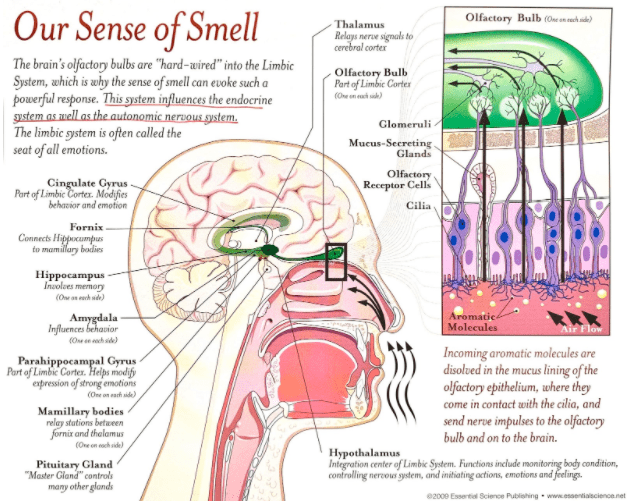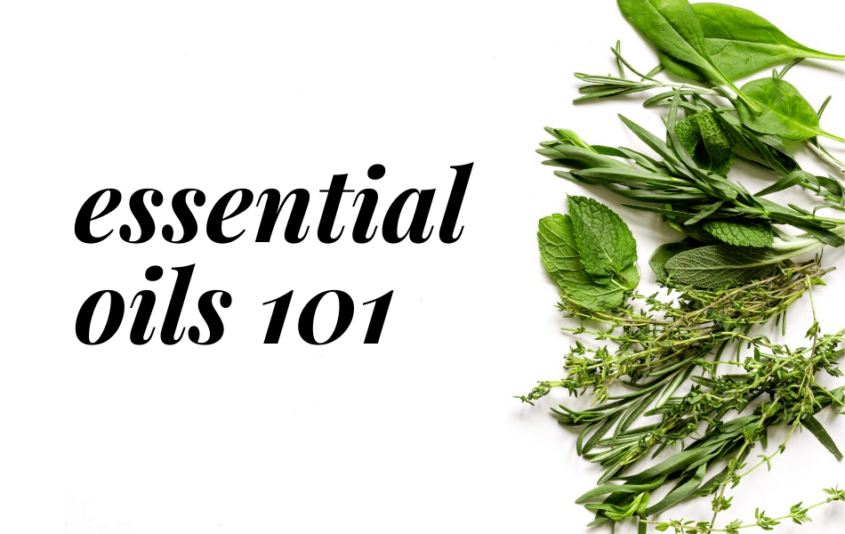What are essential oils?
Essential oils (EOs) are highly concentrated plant extracts from various sources such as tree bark and resin, plant leaves, stems, roots, and flowers, nuts, seeds, and even fruit.
The benefits of essential oils are thanks to an abundant amount of healing and medicinal compounds that are known to support the body’s own healing processes.
The use of essential oils goes back hundreds of years across many different cultures and healing disciplines like Traditional Chinese Medicine and Ayurveda.
What is aromatherapy?
The therapeutic application of EOs is referred to as aromatherapy.
It’s considered a complementary and alternative medicine and holistic healing treatment.
The main goal of this practice is to use EOs in ways that promote and improve one’s mental, emotional, and physical health and wellbeing.
Do essential oils actually work?
Many EOs have been found to be particularly effective at healing multiple health conditions.
Research and preliminary clinical trials show EOs can be effective at:
- Boosting immunity
- Decreasing stress and anxiety
- Relieving pain and discomfort
- Soothing eczema and other skin conditions
- Treating colds, coughs, sinus infections, and sore throats
- Addressing allergy symptoms
- Soothing headaches and migraines
- Decreasing inflammation
- Treating warts
- Healing bug bites
- Treating hemorrhoids
- Soothing arthritis symptoms
- Helping sunburns and skin burns
- Improving mood and mental health
That being said, the same EO can have different effects on different people.
And some will find that EOs don’t work as well for them.
We all have different and unique biochemical makeup and this means that what may work for you won’t necessarily work for me.
For example, for many people, lavender essential oil is a calmative though for some it can actually act as a stimulant.
You’ll have to find your own EO path and test and try to see what you resonate with and what you don’t.
How do essential oils work?
The active chemicals found in EOs can enter your body and bloodstream in various ways the most common ones being the following:
Inhalation

Using a diffuser or inhaler can help you breathe in the aromatic compounds which will then travel to your lungs and then travel through to your bloodstream.
EOs also influence the brain and nervous system via the olfactory bulb which sits just atop the nose.
The olfactory bulb is actually a part of the brain that connects to your limbic system – the part of your brain that oversees emotional response like fear and anxiety.
Your limbic system is also responsible for other functions like memory, sexuality, and learning.
This is why it’s common that certain smells evoke certain memories and subconscious thinking.
The limbic system also influences the endocrine system (hormones), as well as the sympathetic nervous system (stress response), and the parasympathetic nervous system (relaxation response).
The amygdala is one of the main players in the limbic brain and its role is to scan the environment and sound the alarm if any potential danger or threat is detected.
The amygdala’s fear/stress response can be influenced by EOs that come in contact with the brain via the olfactory bulb.
It’s hypothesized that this is one mechanism through which EOs can help process emotions.
Topical application
Another way EOs can enter the body is via direct application to the skin, our largest organ.
Their active compounds impact the body by entering the bloodstream via the skin.
It’s important to note that EOs should never be applied directly to the skin without first diluting them in a carrier oil like jojoba or coconut oil.
Ingestion
Another way EOs can enter the body is via ingestion.
Orally consuming EOs seems to be a source of controversy amongst the EO community.
Some claim that it simply isn’t safe to ever ingest EOs.
Others say that it’s okay to take EOs orally as long as they are used safely and with direct supervision of a knowledgeable health professional.
And others believe that if you do your due diligence, research every high-quality EO you’re looking to ingest, and are aware of the contraindications, then you can proceed with caution and use the oils for internal purposes.
The U.S. Food and Drug Administration (FDA) created a comprehensive list of EOs that are considered ‘generally recognized as safe’ (GRAS) for ingestion provided the oils are undiluted, solvent-free, and consumed in an appropriate quantity and as described. (5)
This list is not exhaustive.
The FDA doesn’t regulate EOs so it’s on you to do your own research and make up your own decisions when looking to purchase any oil.
It’s a good idea to only ingest supplement-grade, certified organic EO products as you don’t want to make symptoms worse to ingest pesticides and other harmful chemicals.
It’s also a good idea to use vegetable gel capsules that you can add the EO too.
Dilute the EO with MCT oil or olive oil if you’re going to use the capsule method.
If you experience any sort of chronic health issue or are on any kind of medication it’s important to first consult with your healthcare provider and an experienced aromatherapist prior to ingesting any EO.
What essential oils are used for what?
Here’s a quick list of the 10 most popular essential oils along with their alleged health benefits:
- Peppermint oil – is a digestive aid that can help provide constipation relief and can also alleviate IBS (irritable bowel syndrome) symptoms.
- Tea tree oil (aka Melaleuca) – is a potent antifungal, antiviral, and antiseptic.
- Lavender oil (aka Lavandula) – Is one of the most well-known oils for stress relief and improving sleep
- Eucalyptus oil – Is effective at alleviating respiratory infections.
- Oregano oil – Is a potent anti-inflammatory, antifungal, and antibacterial.
- Roman chamomile oil – It’s gentle enough for most sensitive skin types, it’s soothing and highly anti-inflammatory.
- Frankincense oil – It contains anti-tumor properties and is highly anti-inflammatory.
- Sandalwood oil – This oil may help lower blood pressure and it also supports balanced hormones.
- Grapefruit oil – Helps support weight loss by reducing food cravings, reduces cellulite, and helps stimulate the body’s detox mechanisms by way of the lymphatic system.
- Ylang-ylang – Is a brightly-scented oil that’s commonly used for skin care and anti-aging.
What is the best essential oil to use?
That depends on what effect or use you’re after.
There are different EO profiles, each with different effects:
Cooling EOs include clary sage and peppermint.
Warming EOs include clove, ginger, black pepper, and cinnamon bark.
Calming EOs include helichrysum, rose, ylang-ylang, jasmine, and cedarwood.
Energizing EOs include citrus oils like sweet orange (which make a great addition to DIY cleaning products), bergamot (which has an uplifting effect), geranium, and wintergreen.
Other EOs like citronella make good insect repellent additions.
Lemongrass can help reduce dandruff and improve scalp health.
Mix peppermint essential oil and eucalyptus essential oil for a chest rub for coughs, colds, or sinus infections.
What are the side effects of essential oils?
When used safely and mindfully EOs usually offer little to no side effects though these are the things to look out for:
- Allergic reactions
- Skin irritation
- Worsening of symptoms
You want to make sure you’re using 100% pure essential oil that is undiluted and certified organic.
This ensures the highest healing benefits and potency and can also protect you against potentially harmful chemicals and solvents.
When using EOs directly on the skin such as with wart treatment it’s very important to dilute the oils with a carrier oil.
You do not want to apply the neat oils directly on the skin as this can cause skin irritation and adverse reactions particularly if you have sensitive skin.
This is especially true if you’re dealing with burned skin.
Always perform a patch test on a non-affected area and wait 24 hours before proceeding to the affected area.
Are essential oils safe for pets?
Some essential oils are safe for pet use and some are actually toxic and should be avoided completely.
These are the essential oils that are safe for dogs and these are the ones that are safe for cats.












